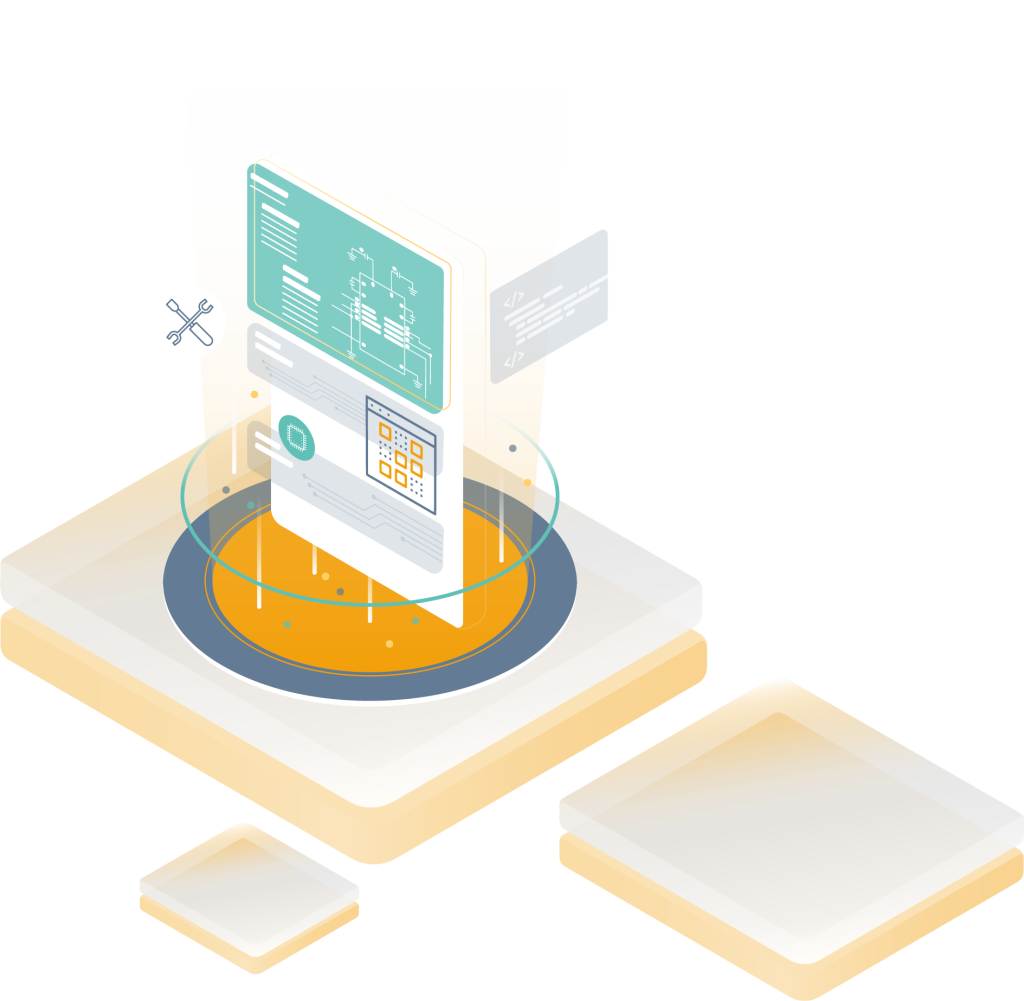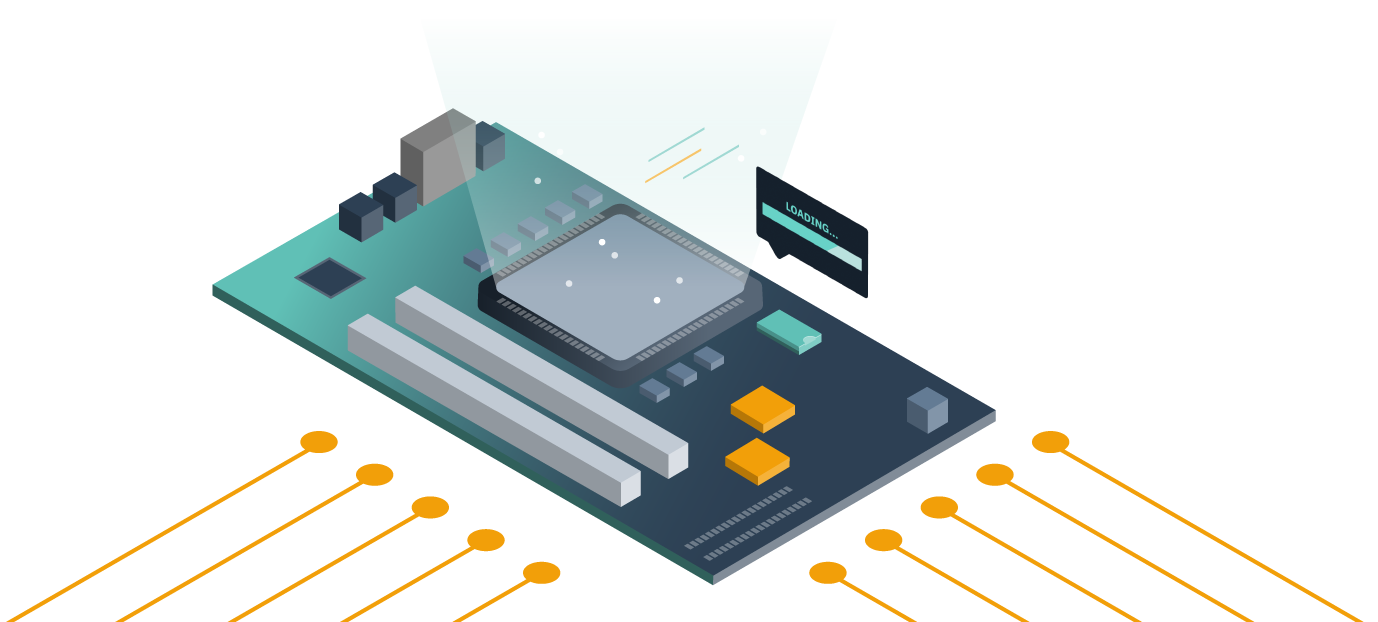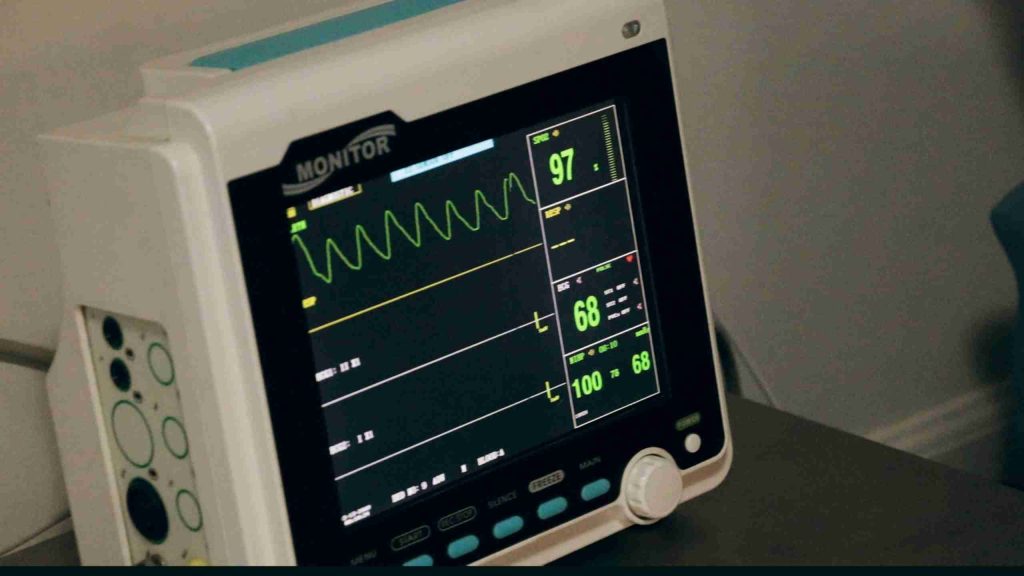Modernize Your Embedded Firmware Development
Dojo (noun), a place of learning. Scroll down to learn more about modernizing your embedded firmware development.

Your Firmware Assembly Line
PRODUCT FIRMWARE
Unlock the Full
Potential of
Your Team

Elevate your products, invest in your product firmware, and gain an edge over your competitors. Firmware is essential for creating a smooth and exceptional user experience in your company’s products. By focusing on refining your product’s firmware, your team can play a crucial role in delivering cutting-edge features, streamlining operations, and ensuring customer satisfaction.
SOURCE CODE REPO
Crucial for Software Development
Automate build, test, and deployment processes with ease—streamlining development, improving collaboration, and simplifying project management. By utilizing the power of source code repositories, teams experience efficient version control which allows them to effortlessly track changes, compare versions, and revert back to previous states when needed. With code securely stored, backed up, and easily recoverable, data loss fears are a thing of the past! Empower your team with the ability to collaborate seamlessly with each other, promote code sharing, and integrate existing components effortlessly.
BUILD ENVIRONMENT
Reduce Errors and Build Consistently
Achieve reliable and efficient firmware development, streamline your workflows, and produce high-quality results with a consistent build environment. By eliminating variations in setups, errors are reduced and consistency across builds is ensured. Plus, on-boarding new team members becomes faster and troubleshooting becomes easier in a standardized environment, leading to quicker issue resolution and increased productivity. Maintaining a consistent build environment also guarantees long-term compatibility and stability for firmware development.
CI/CD
Automate Build, Test, and Deployment Processes
Bring consistency and reliability to software releases by automating the build, test, and deployment processes in embedded firmware development through a Continuous Integration/Continuous Delivery (CI/CD) pipeline. By integrating version control systems, developers can easily incorporate code changes, automate builds, and perform comprehensive testing. A CI/CD pipeline facilitates seamless deployment of firmware updates and ensures the delivery of robust and up-to-date embedded firmware. This proactive approach reduces errors, elevates code quality, and minimizes the need for manual testing.
HARDWARE IN THE LOOP
Vital for Embedded Development
Enhance the quality and reliability of embedded firmware by minimizing the risk of failures and contributing to a robust end product through HIL testing. Hardware in the Loop (HIL) testing allows developers to test the functionality of firmware by connecting it to real or emulated hardware components. HIL testing provides a realistic and accurate representation of the operational environment, enabling thorough testing of firmware interactions with physical devices and sensors. This approach ensures that firmware performs as expected, meets specifications, and operates reliably in real-world situations.
OVER-THE-AIR (OTA)
Remote and Seamless Distribution of Updates
Ensure easy updating, patching, and improvement after deployment while reducing costs, improving scalability and maintainability–all while enhancing user experience by keeping devices up-to-date and secure through planning for OTA. Over-the-Air (OTA) updates are essential to embedded firmware development and allow for remote distribution of updates–eliminating the need for manual intervention or physical access. By considering OTA capabilities early on, developers can design firmware that supports secure and efficient updates such as firmware partitioning, version control, update integrity, rollback mechanisms, and multiple hardware compatibility configurations.
MONITORING
Streamline Workflows and Enhance Productivity
Streamline workflows and enhance productivity through the tools, processes, and best practices offered by EmbedOps®, Dojo Five’s comprehensive platform for embedded software development. By embracing agile and DevOps principles, EmbedOps enables iterative development, seamless integration, and efficient deployment of embedded systems. It prioritizes security and reliability through robust mechanisms for secure updates and rigorous testing. With extensive documentation and support, EmbedOps empowers developers to accelerate their development cycles, ensure high-quality software, and deliver reliable embedded systems.
We used to do everything manually, and now quite a bit of what can be automated is automated through EmbedOps®. And that's been great.
We've worked with other consultants, and they do not have that level of response. These people are always there, they're always monitoring Slack, they're always jumping in to try to help us fix whatever issues come up.
Companies We've Delighted











Interested in learning more?
Best-in-class embedded firmware content, resources and best practices

I want to write my first embedded program. Where do I start?
The boom in the Internet of Things (IoT) commercial devices and hobbyist platforms like the Raspberry Pi and Arduino have created a lot of options, offering inexpensive platforms with easy to use development tools for creating embedded projects. You have a lot of options to choose from. An embedded development platform is typically a microcontroller chip mounted on a circuit board designed to show off its features. There are typically two types out there: there are inexpensive versions, sometimes called

IEC-62304 Medical Device Software – Software Life Cycle Processes Primer – Part 1
IEC-62304 Software Lifecycle requires a lot of self-reflection to scrutinize and document your development processes. There is an endless pursuit of perfection when it comes to heavily regulated industries. How can you guarantee something will have zero defects? That’s a pretty hefty task. The regulatory approach for the medical device industry is process control. The concept essentially states that if you document how every step must be completed, and provide checks to show every step has been completed properly, you

IEC-62304 Medical Device Software – Software Life Cycle Processes Primer – Part II
Part I provides some background to IEC-62304. Part II provides a slightly more in-depth look at some of the specifics. The IEC 62304 Medical Device Software – Software Lifecycle Processes looks into your development processes for creating and maintaining your software. The standard is available for purchase here. So what activities does the standard look at? Here are some of the major topics. For any given topic, there will be a lot more specifics. This will look at a few
